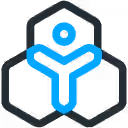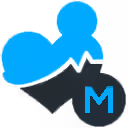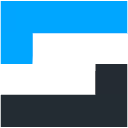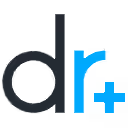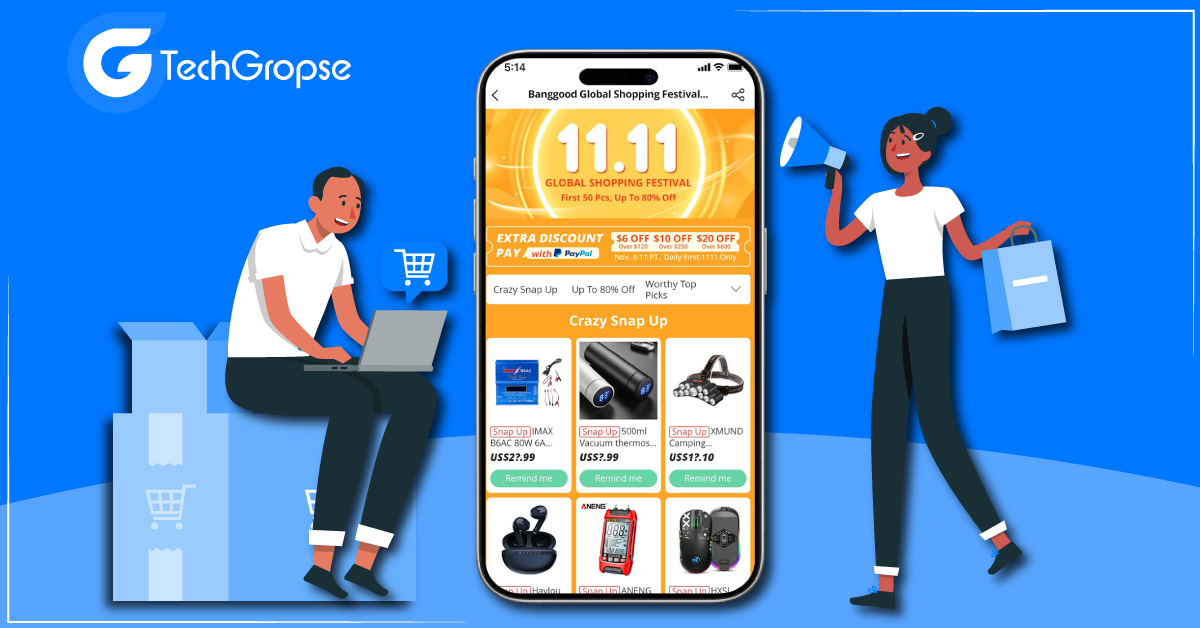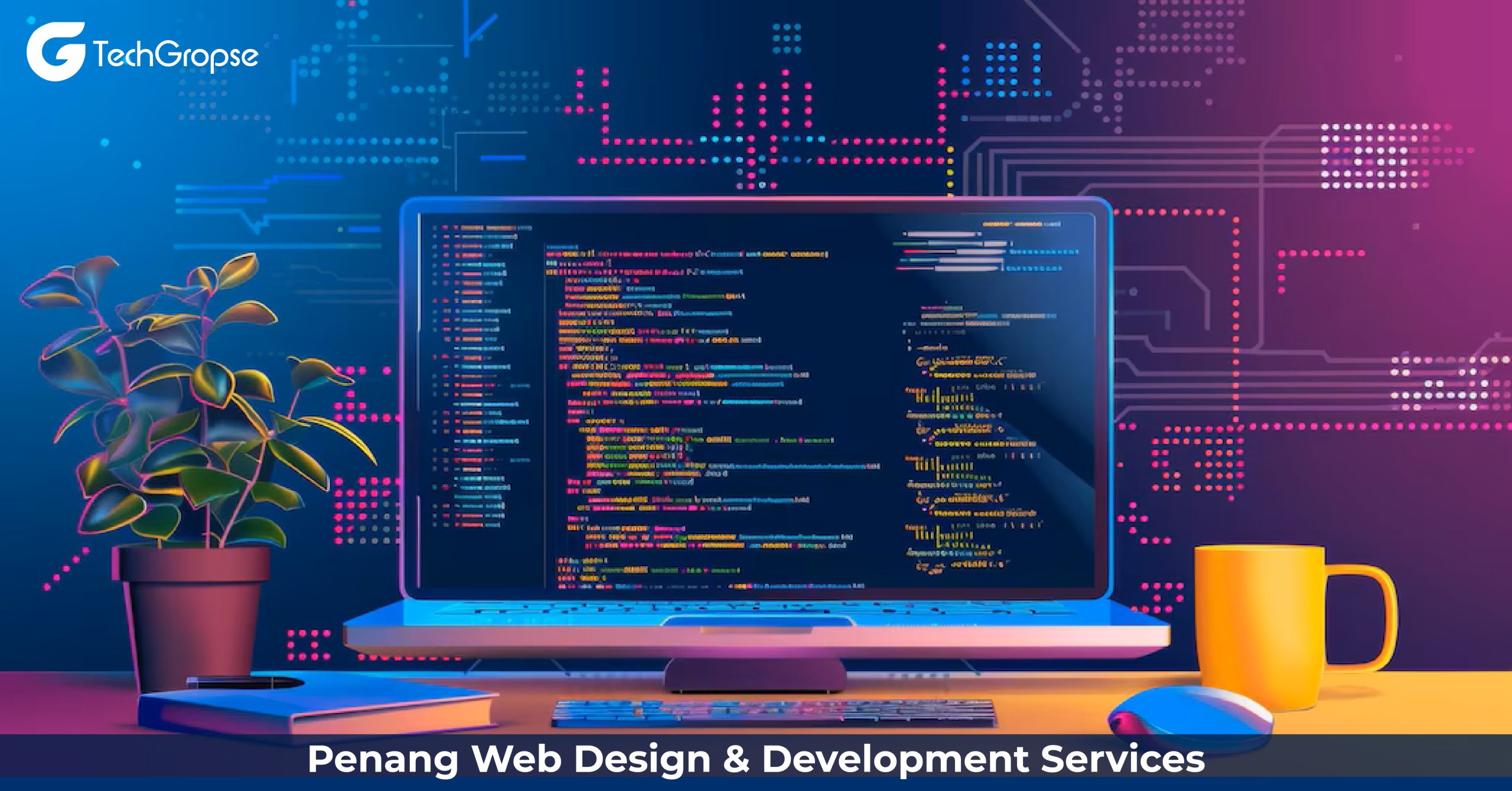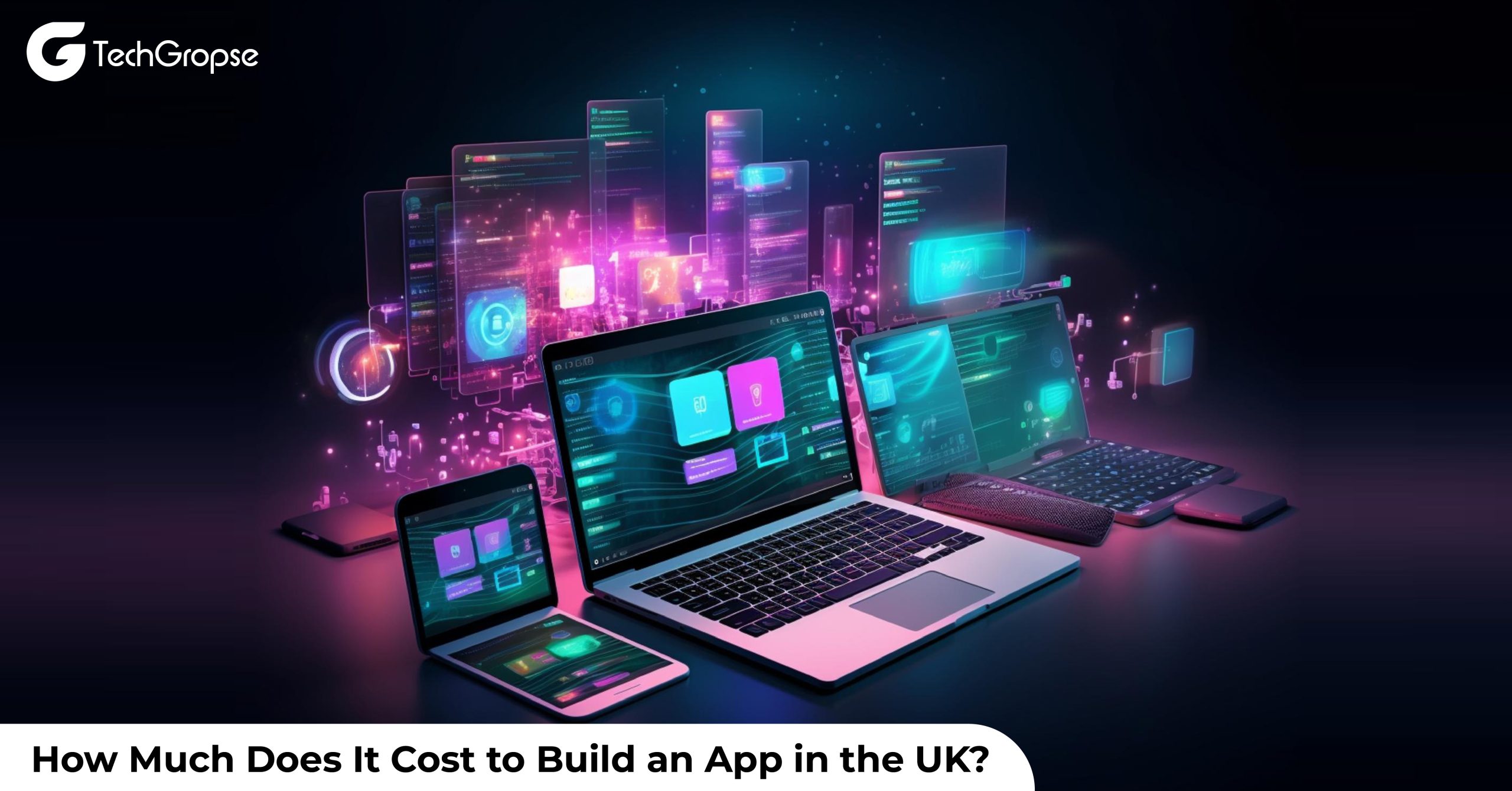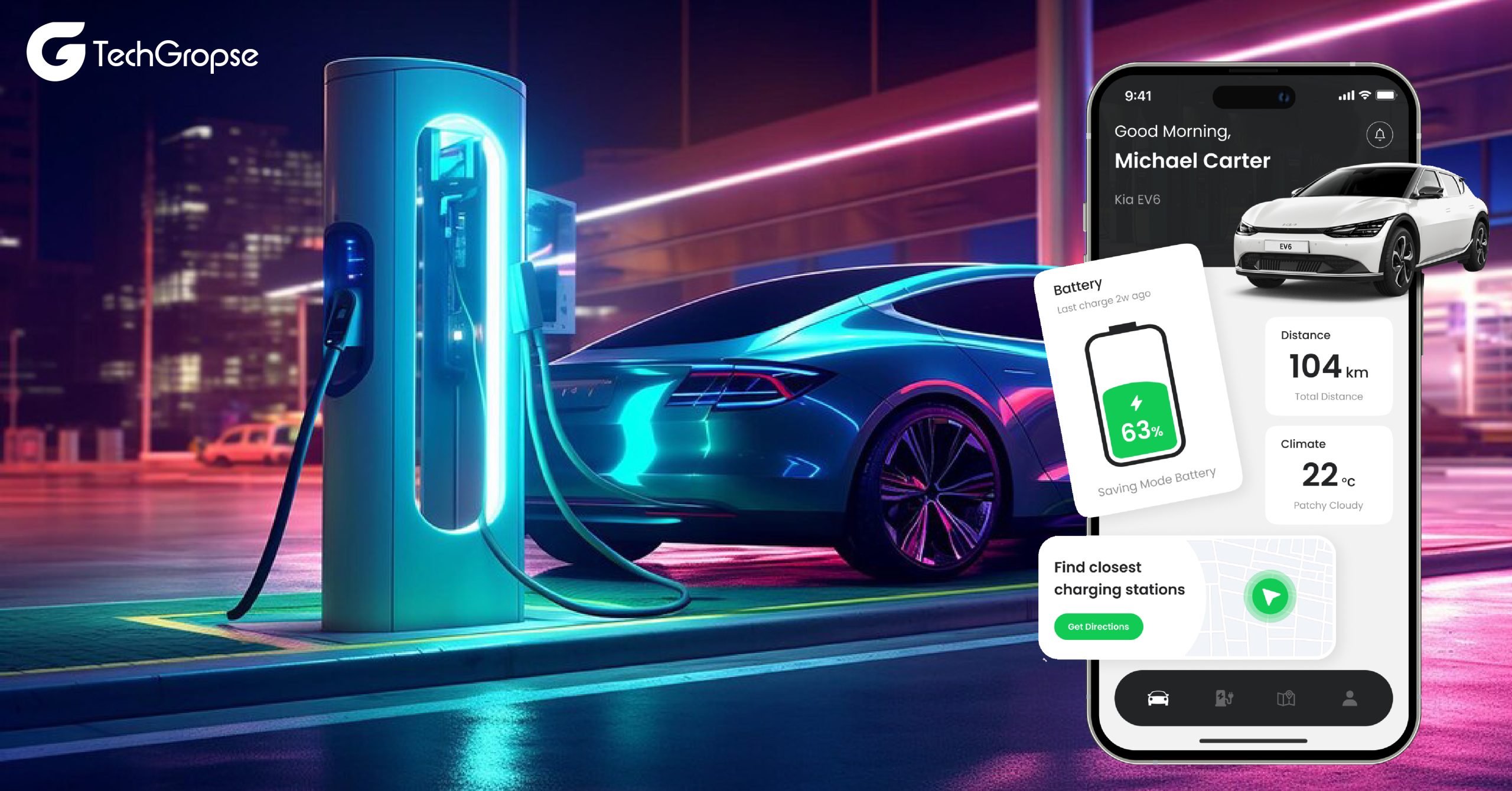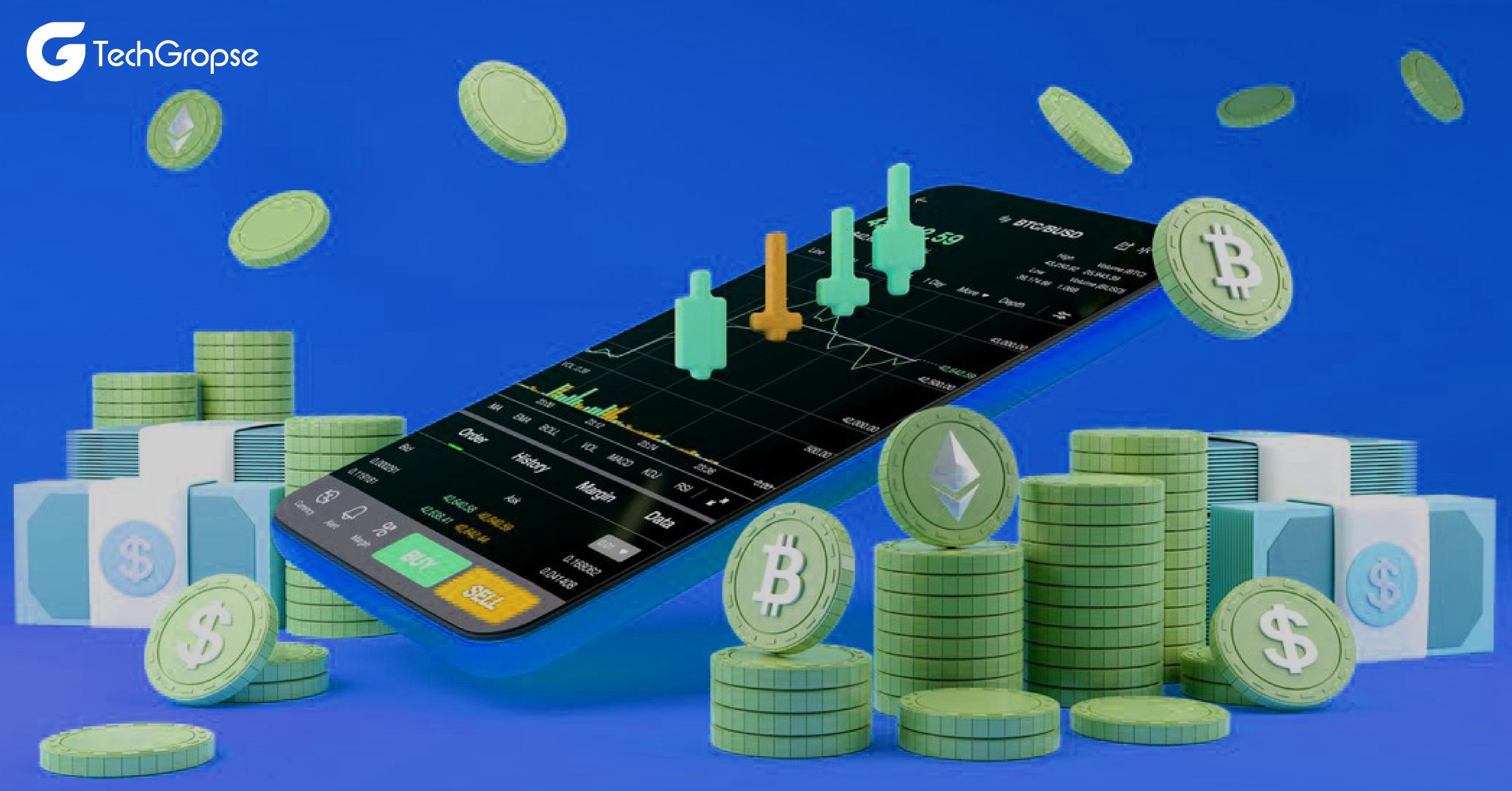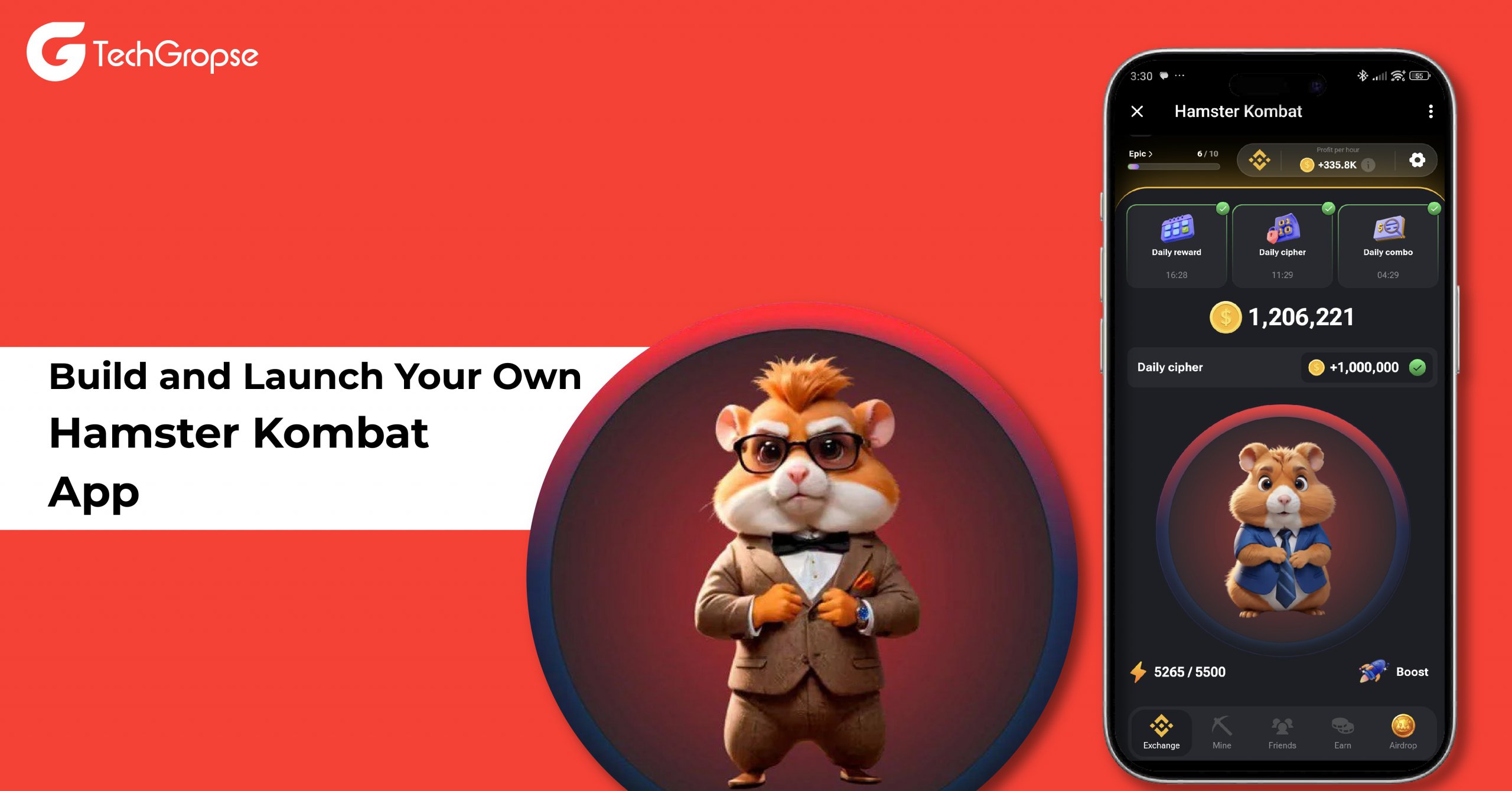Are you bored with the old shopping method? Imagine an eCommerce app like Banggood, where you can find everything from electronics to fashion, all in one place. Ready to build an eCommerce app like Banggood in a better way? Keep reading.
Welcome to the future of online shopping. Banggood eCommerce app, a pioneer in the industry, combines unbeatable prices with an extensive product range, so you never have to look elsewhere.
Whether you are looking for the latest gadgets or the trendiest clothes, the eCommerce app has it all.
Suppose you build an eCommerce app like Banggood. In that case, it offers a one-stop-shop experience for everything from electronics to fantastic clothing. It is a popular choice for budget-conscious consumers worldwide.
If you are inspired by Banggood’s remarkable success and want to build ecommerce app, this guide will equip you with the knowledge and tools to turn that dream into a thriving reality.
Table of Contents
Banggood Market Statistics Overview
Banggood.com, a marketplace, generated a staggering $27,662,038 in revenue in March 2024, with a conversion rate between 2.50% and 3.00%. This performance is compared to the industry median revenue of $603,195.
Look at the average order value of $150 to $175. This performance is compared to the industry median revenue of $603,195.
Amazon.com is the largest online store in this category. It recorded a revenue of $10,613,508,312 and had the highest conversion rate of 4.38%.
Banggood.com had 6,121,150 sessions, while Amazon.com had the most sessions with 2,226,063,824. The median number of sessions in the marketplace industry is 180,160.
| Attribute | Details |
| Global Net Sales (2023) | US$129.8m |
| Global Rank (2023) | #1273 |
| Main Country | United States |
| Main Category | Fashion |
| Launch Year | 2006 |
| Registered Users | 66 million+ |
Top 10 Reasons Why Your Business Needs an eCommerce App in 2024
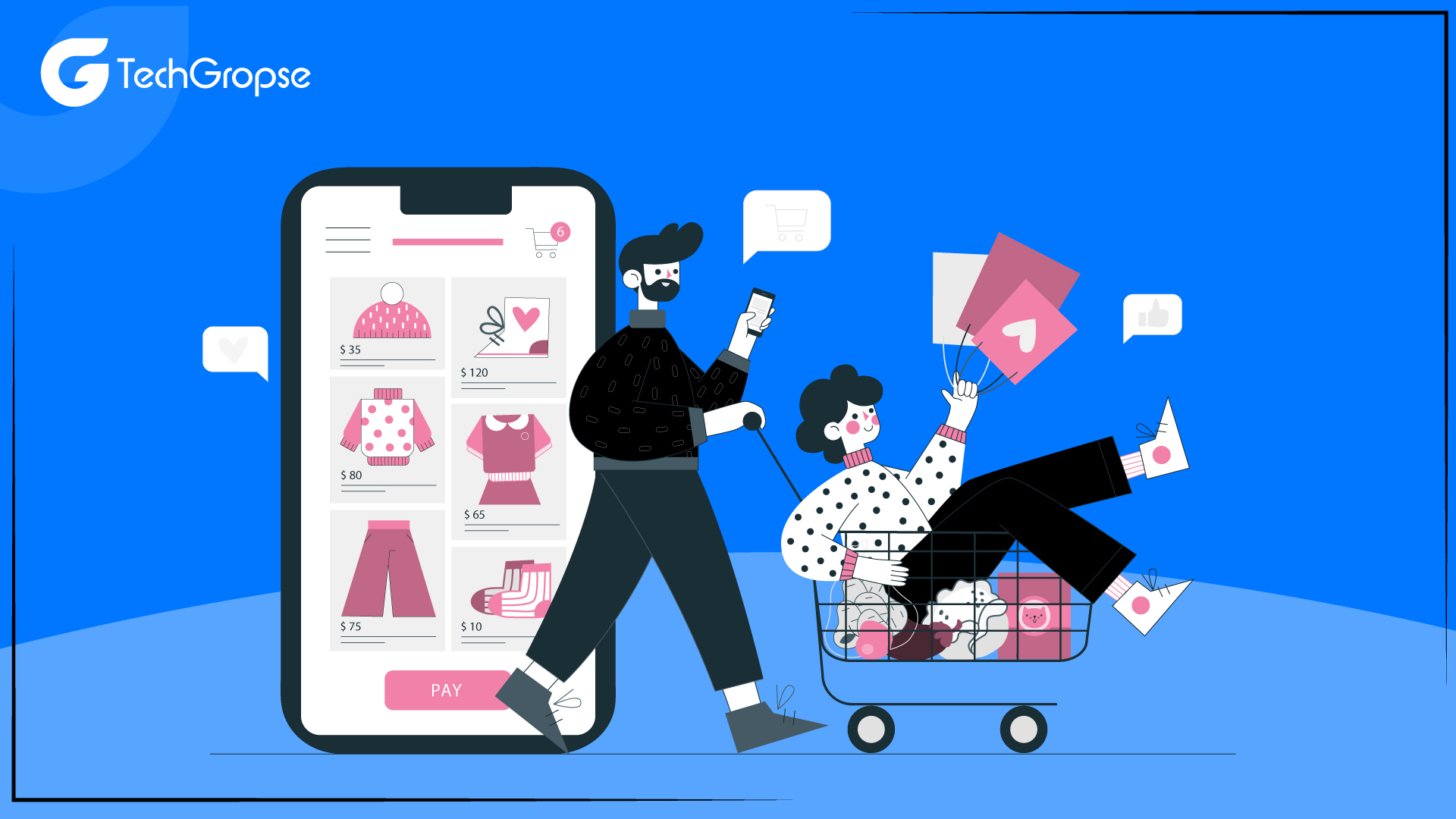
By building an eCommerce app like Banggood, your business can leverage these benefits to drive growth, enhance customer satisfaction, and stay competitive in the digital marketplace.
Ecommerce app development solutions offer various benefits if you build an eCommerce app like Banggood.Global Reach: An eCommerce app allows your business to reach customers worldwide, expanding your market far beyond local boundaries.
- Increased Sales: With a user-friendly app, customers can shop anytime and anywhere, leading to higher sales and revenue.
- Customer Convenience: An app offers a seamless shopping experience with easy navigation. It allows quick checkout and multiple payment options, enhancing customer satisfaction.
- Brand Recognition: A well-designed app can strengthen your brand identity and make it more recognizable in the competitive market.
- Personalized Marketing: Utilize customer data to offer promotions, customized recommendations, and notifications, improving customer engagement and loyalty.
- Enhanced Customer Service: Features like easy returns, live chat, and order tracking improve the overall customer service experience.
- Operational Efficiency: Automate processes like management, inventory order processing, and customer support to achieve more efficient operations.
- Data Insights: Collect and analyze customer data to achieve valuable insights into shopping behaviour, which will help you make informed business decisions.
- Competitive Edge: Stay ahead of competitors by offering a modern, mobile-first shopping experience that meets the demands of today’s consumers.
- Revenue Diversification: Generate additional revenue through advertising, premium listings, and subscription services for sellers.
Reasons Why Users Love eCommerce Apps Like Banggood in 2024
- Convenience: Users can shop anytime, anywhere, without the need to visit physical stores. The app provides a seamless shopping experience right at their fingertips.
- Wide Product Range: Users have access to multiple products from numerous sellers, allowing them to find everything they need in one place.
- Easy Navigation: User-friendly interface and search functionality make it easy to compare prices, browse products, and find what they are looking for.
- Personalized Experience: The app can offer customized recommendations based on user preferences and shopping history, making the shopping experience more enjoyable.
- Secure Transactions: Secure payment gateways ensure that user transactions are safe, protecting their financial information.
- Order Tracking: Users can track their orders in real-time, knowing exactly when their purchases will arrive.
- Customer Support: Access to support features like FAQs and easy return processes help users resolve issues efficiently and quickly.
- Exclusive Deals and Discounts: Users often get access to app-exclusive deals, discounts, and promotional offers that are not available elsewhere.
- Product Reviews and Ratings: Users can read reviews and ratings from other customers, which can help them make informed purchasing decisions.
- Multiple Payment Options: Various payment methods, including credit/debit cards, digital wallets, and other online payment systems, provide flexibility and ease.
- Notifications: Users receive notifications about new arrivals, special offers, and order updates, keeping them informed and engaged.
Step to Build an eCommerce App Like Banggood
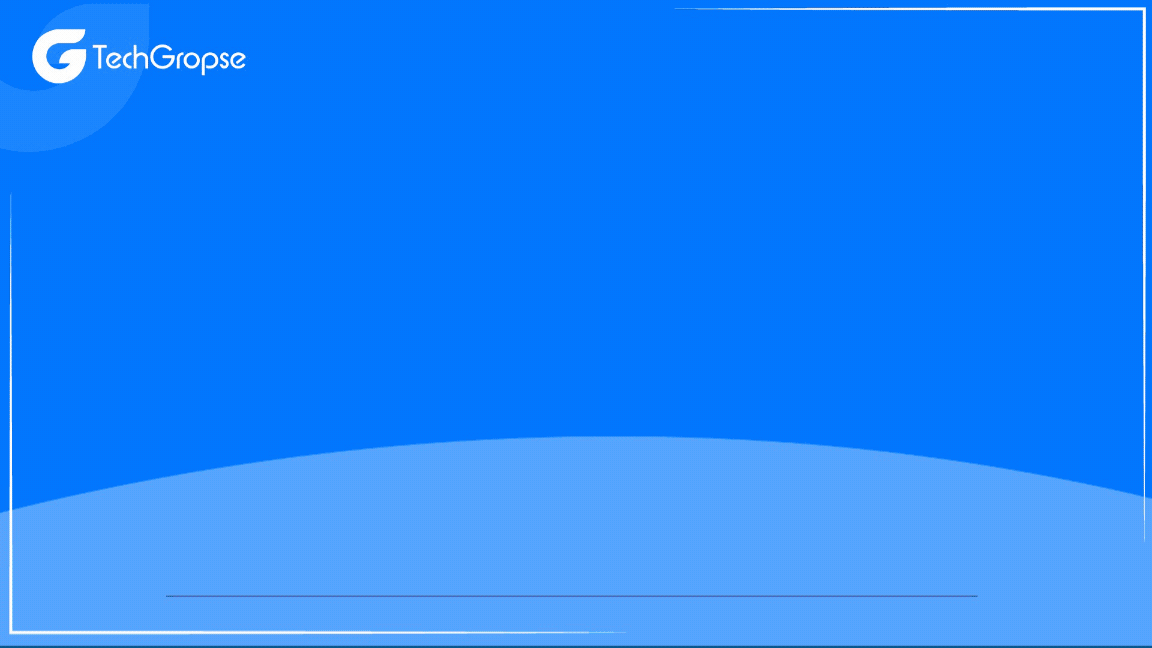
For an e-commerce business, your website is like a virtual store for your customers. Just like a physical store, your e-commerce site should reflect your brand’s style and feel. You also want to make sure it is easy for users to navigate.
With big names like Amazon, eBay, and Etsy, there is an excellent opportunity for new brands to enter the e-commerce market. Don’t wait any longer to build an eCommerce app like Banggood.
Your website should show your brand identity and products and link to social media and other digital content to boost sales.
So, save your time and consult with an eCommerce app development company to complete your project on time.
Let’s explore how to build an e-commerce website that fits your product or service.
1. Understanding the Market and Defining the Scope
-
Market Research
Before moving into the ecommerce app development process, conduct thorough market research to understand the current eCommerce landscape. Identify your target audience, their preferences, and the competitive environment. Analyze Banggood’s strengths, weaknesses, opportunities, and threats (SWOT analysis) to find what works and what can be improved.
-
Defining the Scope
Determine the scope of your app. Decide on the range of products you will offer, the geographical markets you will target, and the core features your app will include. The scope will influence the design, development, and marketing strategies of your app.
2. Planning and Strategy
-
Business Model
Select a business model that perfectly matches your goals. Banggood works on a B2C (Business-to-Consumer) model, which could be a good starting point. However, you might also consider B2B (Business-to-Business) or a hybrid model, depending on your market research.
-
Monetization Strategy
Hire ecommerce app developers who decide how you will monetize your app. Common strategies include:
- Commission: Taking a percentage of each sale.
- Subscription: Charging users a recurring fee for premium features.
- Advertisements: Displaying ads within the app.
- Freemium Model: Include simple features for free while charging for progressive features.
3. Feature List
So, what are eCommerce App Features for Startups? Let us tell you.
If you want to compete with Banggood, your app needs to have a comprehensive feature list.
Here are some must-have features that are included by an ecommerce app development company.
User Account Management
- Sign Up/Sign In: This option allows users to create accounts using email, phone number, or social media.
- User Profile: Enable users to manage their personal information, addresses, and payment methods.
Product Catalogue
- Search and Filters: Advanced search and filtering options to help users find products quickly.
- Product Details: Detailed product descriptions, high-quality images, videos, and user reviews.
- Wishlist: Enable users to save wishlist products for future purchases.
Shopping Cart and Checkout
- Shopping Cart: A robust shopping cart that shows selected items, quantities, and total prices.
- Secure Checkout: Multiple payment options (credit/debit cards, PayPal, digital wallets).
- Order Tracking: Real-time monitoring of order status and delivery.
Customer Support
- Live Chat: Instant support for user queries.
- FAQs: A comprehensive FAQ section to address common questions.
- Return and Refund: Easy return and refund process.
Notifications
- Push Notifications: Inform users about new products, discounts, and order updates.
- Email Notifications: Regular updates through email.
4. Design and User Experience
User-Centric Design
A user-friendly design is crucial. Hire dedicated developers who focus on intuitive navigation, fast load times, and a clean interface. Use Banggood as a reference but aim to improve in areas where it might fall short. Employ design principles such as:
- Simplicity: Keep the design simple and clutter-free.
- Consistency: Maintain a consistent colour scheme, fonts, and style.
- Accessibility: Ensure that your app is accessible to all users and those with disabilities.
Prototyping and Feedback
Create wireframes and prototypes for Banggood app development using tools like Sketch, Figma, or Adobe XD. Collect feedback from users and stakeholders to make outstanding design.
5. Development Process
Choosing the Right Tech Stack
Your choice of technology stack will depend on your project requirements, budget, and timeline. Here is a suggested tech stack to build an ecommerce app like Banggood :
- Front-End: React Native or Flutter for cross-platform development.
- Back-End: Node.js or Django for the server side.
- Database: MongoDB or PostgreSQL for data storage.
- Cloud Services: AWS, Google Cloud, or Azure for hosting and services.
- Payment Gateway: Stripe, PayPal, or Braintree for secure transactions.
Agile Development
A mobile app development company adopts an agile development methodology to allow for iterative progress and flexibility. The process of developing an online wholesale store app is broken down into sprints, with each sprint focusing on specific features or components.
6. Integrating Advanced Features
The next phase is to build an eCommerce app like Banggood and consult with an online shopping app development company. It involves AI and ML to enhance user experience:
- Personalized Recommendations: Use algorithms to suggest products based on user behaviour.
- Chatbots: Implement AI-powered chatbots for 24/7 customer support.
- Augmented Reality (AR): Add AR features to allow users to visualize products in their real environment. This is especially useful for furniture, home decor, and fashion products.
- Voice Search: Integrate voice search to provide users with a hands-free search option, improving accessibility and convenience.
7. Security and Compliance
-
Data Security
Ensure that user data is protected through encryption, secure payment gateways, and regular security audits. Implement SSL certificates and adhere to GDPR or other relevant regulations.
-
Compliance
Make sure your app complies with local and international laws regarding eCommerce, data privacy, and consumer rights.
8. Testing
Quality Assurance
A shopping app development company conducts thorough testing to ensure your app is bug-free and performs well under different conditions. Types of testing include:
- Functional Testing: Verify that all features work as planned.
- Performance Testing: Ensure the app performs well under high load.
- Security Testing: Identify and fix vulnerabilities.
- Usability Testing: Gather feedback on the user experience.
9. Launch and Marketing
Beta Testing
Before the official launch, a beta version will be released to a limited audience. Hire mobile app developers to gather feedback and make necessary improvements.
Marketing Strategy
If you want to build online wholesale store app, you must develop a marketing strategy to promote your app:
- Social Media Marketing: Utilize social media platforms like Instagram, Facebook, and Twitter to reach your audience.
- SEO and Content Marketing: Optimize your website and create valuable content to attract organic traffic.
- Paid Advertising: Invest in platforms like social media ads, Google Ads, and influencer partnerships.
App Store Optimization (ASO)
Optimize your app listing on app stores with relevant keywords, high-quality screenshots, and engaging descriptions to improve visibility and downloads.
10. Post-Launch and Maintenance
- User Feedback: Continuously gather user feedback to identify areas for improvement. Use surveys, reviews, and direct communication to understand user needs.
- Regular Updates: Update your app with new features, improvements, and security patches regularly to keep users engaged and ensure it remains competitive.
- Performance Monitoring: Monitor your app’s performance using analytics tools like Google Analytics or Firebase. Track metrics like user engagement, retention, and conversion rates to make data-driven decisions.
Business Model of an eCommerce App Like Banggood
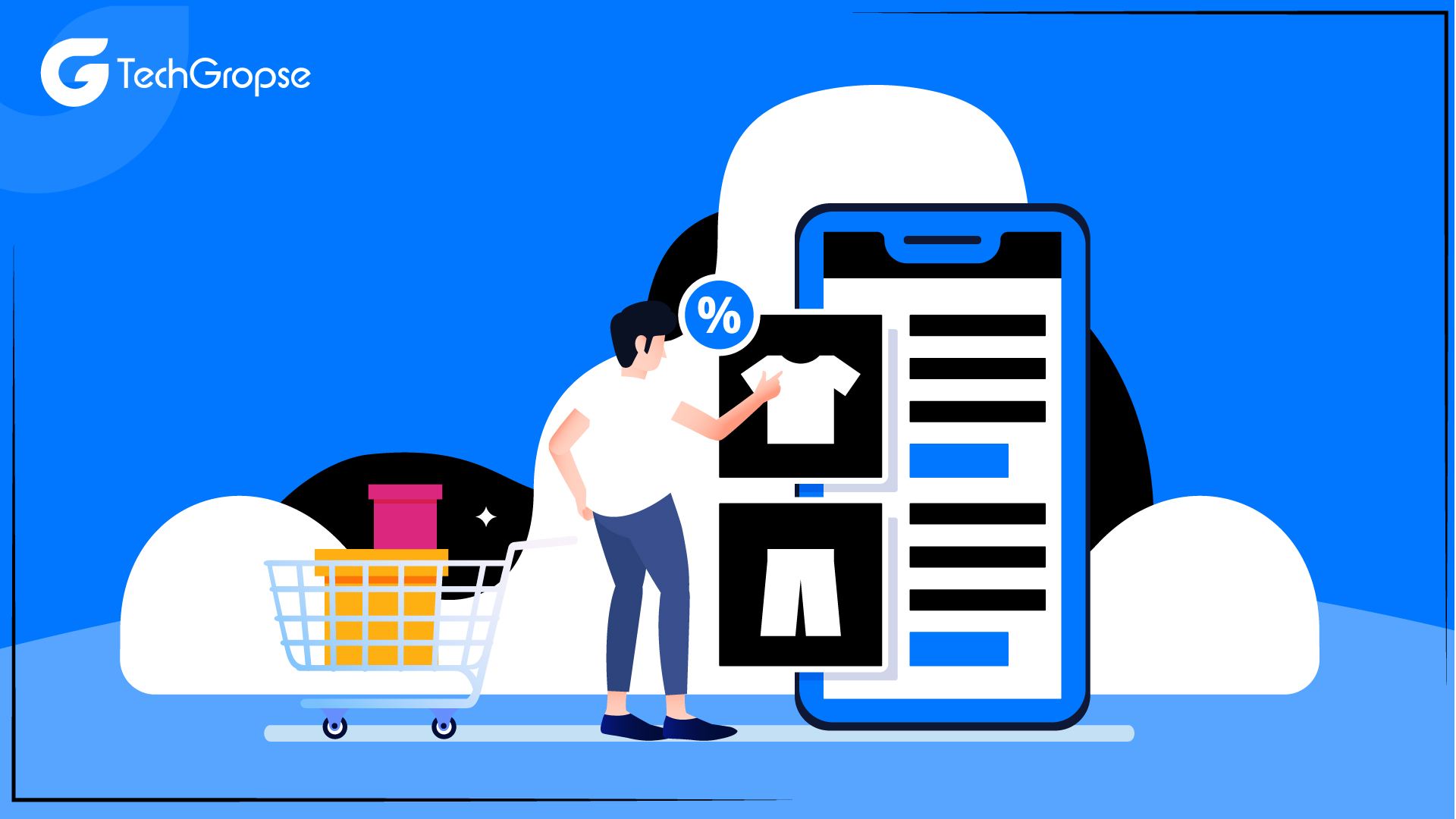
Banggood, like many similar eCommerce apps, follows a retail model with some interesting twists:
Inventory Model:
- Direct Sales: Unlike marketplaces like Amazon, which allow third-party sellers, Banggood primarily functions as a direct retailer. They hold their inventory and manage fulfilment. It allows for:
- Quality Control: Banggood can ensure a certain level of product quality.
- Consistent Shipping: Delivery timeframes are likely to be more stable.
- Dropshipping Program: While Banggood has its inventory, it also offers a dropshipping program. It allows other businesses to sell Banggood products on their platforms and have Banggood handle the fulfilment of orders.
Revenue Streams:
- Product Sales: This is the core revenue stream. Banggood profits from the difference between the cost of acquiring products and the selling price.
- Shipping Fees: Banggood offers various shipping options at different price points.
- Value-Added Services: They might offer additional services like extended warranties or faster shipping for a fee.
- Affiliate Programs: Banggood might partner with influencers or bloggers who can earn commissions by referring customers through unique affiliate links.
Keys to Success
- Competitive Prices: Banggood positions itself as a budget-friendly option, especially compared to traditional retailers.
- Wide Selection: They offer a vast product catalogue across various categories, catering to a broad audience.
- User Experience: It is crucial to have a user-friendly app with efficient search, clear product information, and secure payment gateways.
Things to Consider for a Similar App:
- Finding Reliable Suppliers: Sourcing quality products at competitive prices is essential.
- Building a Strong Brand: As we discussed above to build an ecommerce app like Banggood and standing out in a crowded market requires a distinct brand identity and customer trust.
- Logistics and Fulfillment: Building a robust infrastructure for efficient storage, packaging, and shipping is critical.
How Much Does It Cost to Build an eCommerce App Like Banggood?
| Component | Estimated Cost (USD) |
| App Design | $5,000 – $15,000 |
| Front-End Development | $15,000 – $30,000 |
| Back-End Development | $20,000 – $40,000 |
| Database Setup | $5,000 – $10,000 |
| API Integration | $5,000 – $15,000 |
| Payment Gateway | $3,000 – $10,000 |
| User Authentication | $2,000 – $5,000 |
| Product Management | $5,000 – $10,000 |
| Order Management | $5,000 – $10,000 |
| Shipping Integration | $5,000 – $10,000 |
| Analytics and Reporting | $5,000 – $10,000 |
| Testing and QA | $5,000 – $10,000 |
| Deployment | $2,000 – $5,000 |
| Maintenance | $2,000 – $5,000 per month |
| Marketing and SEO | $3,000 – $7,000 |
Total Estimated Cost: $92,000 – $222,000 (one-time development cost)
Monthly Maintenance Cost: $2,000 – $5,000
*Please note the costs to build an ecommerce app can vary widely based on the complexity of the app. Apart from that, the region where the development team is located, and additional features or customizations required.
List of Popular eCommerce Apps Similar to Banggood
| App Name | Downloads | Active Users | Founded Year | Rating |
| Amazon | 500M+ | 300M+ | 1994 | 4.6/5 |
| eBay | 100M+ | 180M+ | 1995 | 4.5/5 |
| AliExpress | 500M+ | 150M+ | 2010 | 4.4/5 |
| Wish | 100M+ | 90M+ | 2010 | 4.5/5 |
| Shopify | 10M+ | 1.7M+ | 2006 | 4.3/5 |
| Etsy | 50M+ | 90M+ | 2005 | 4.7/5 |
| JD.com | 100M+ | 50M+ | 1998 | 4.2/5 |
| Zalando | 50M+ | 45M+ | 2008 | 4.4/5 |
| Rakuten | 10M+ | 100M+ | 1997 | 4.2/5 |
Conclusion
Building an eCommerce app like Banggood is a complex but rewarding process. An Android app development company knows a combination of strategic planning, market understanding, user-centric design, robust development, and effective marketing.
By following the above steps, you can also develop an eCommerce app like 6th Street that meets the needs of modern consumers and stands out in the crowded online shopping landscape.
Remember, the key to success lies in continuous improvement and adaptation to changing market trends and user preferences.
With dedication and the right approach, your eCommerce app can achieve significant success in the global market.
FAQ: How to Build an eCommerce App Like Banggood
1. How do you develop an online shopping application?
Begin with a clear concept and wireframes. Select the right technology stack (e.g., React Native, Flutter). Create essential features like product listings, a shopping cart, payment integration, and user profiles. iPhone app development company test your app thoroughly before launching it on app stores.
2. How long does it take to build an ecommerce app like Banggood?
Developing an eCommerce app takes between 6 to 12 months. It includes complete planning, outstanding designing, coding, testing, and launching. Shopping app development company tell the exact duration depending on the app’s complexity and the size of the development team.
3. How to make an ecommerce app without coding?
Use no-code or low-code platforms like Shopify, Wix, or Appy Pie. These platforms provide drag-and-drop tools to design your app and add functionalities without any coding knowledge.

Hello All,
Aman Mishra has years of experience in the IT industry. His passion for helping people in all aspects of mobile app development. Therefore, He write several blogs that help the readers to get the appropriate information about mobile app development trends, technology, and many other aspects.In addition to providing mobile app development services in USA, he also provides maintenance & support services for businesses of all sizes. He tried to solve all their readers’ queries and ensure that the given information would be helpful for them.



























































